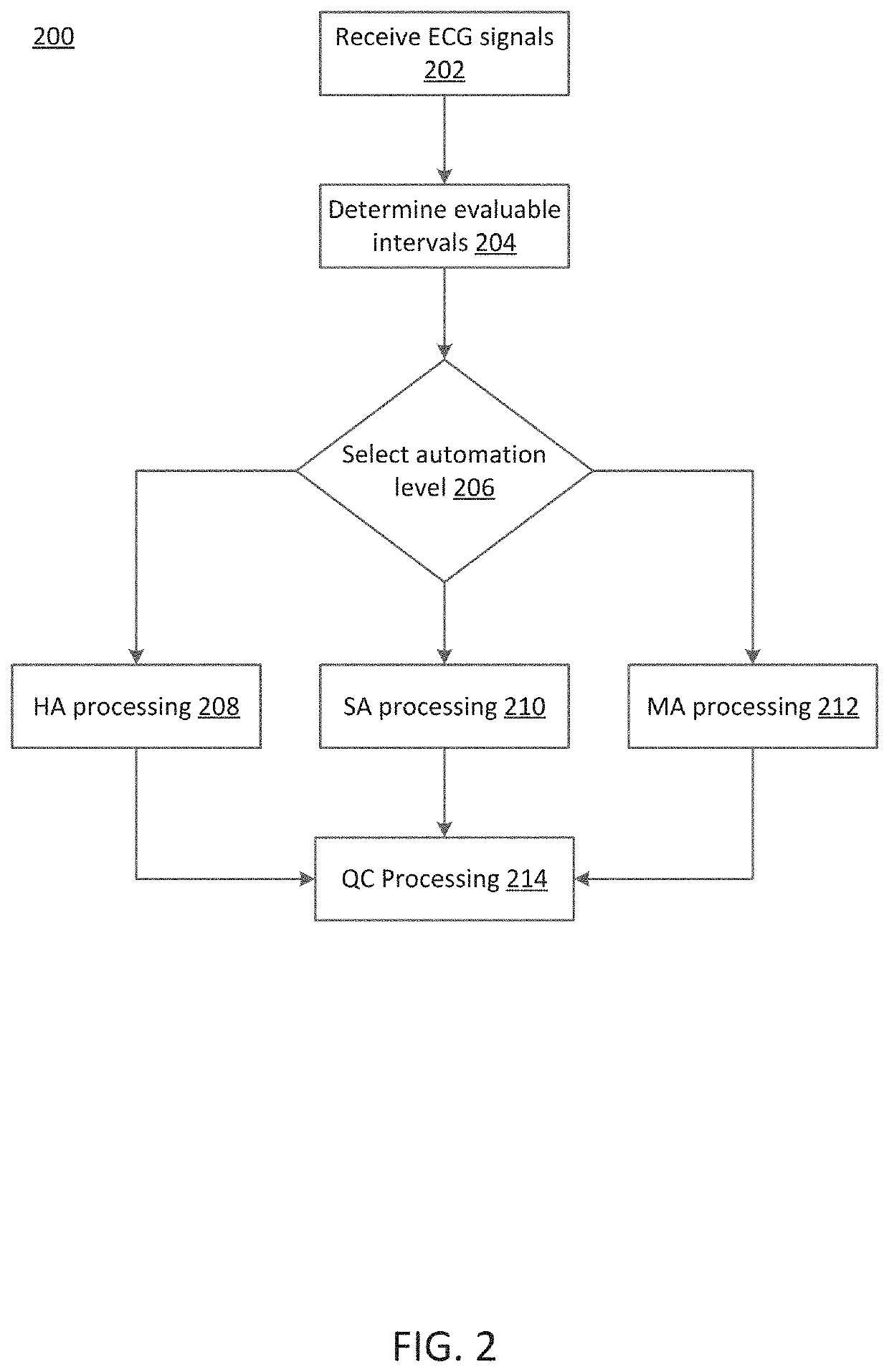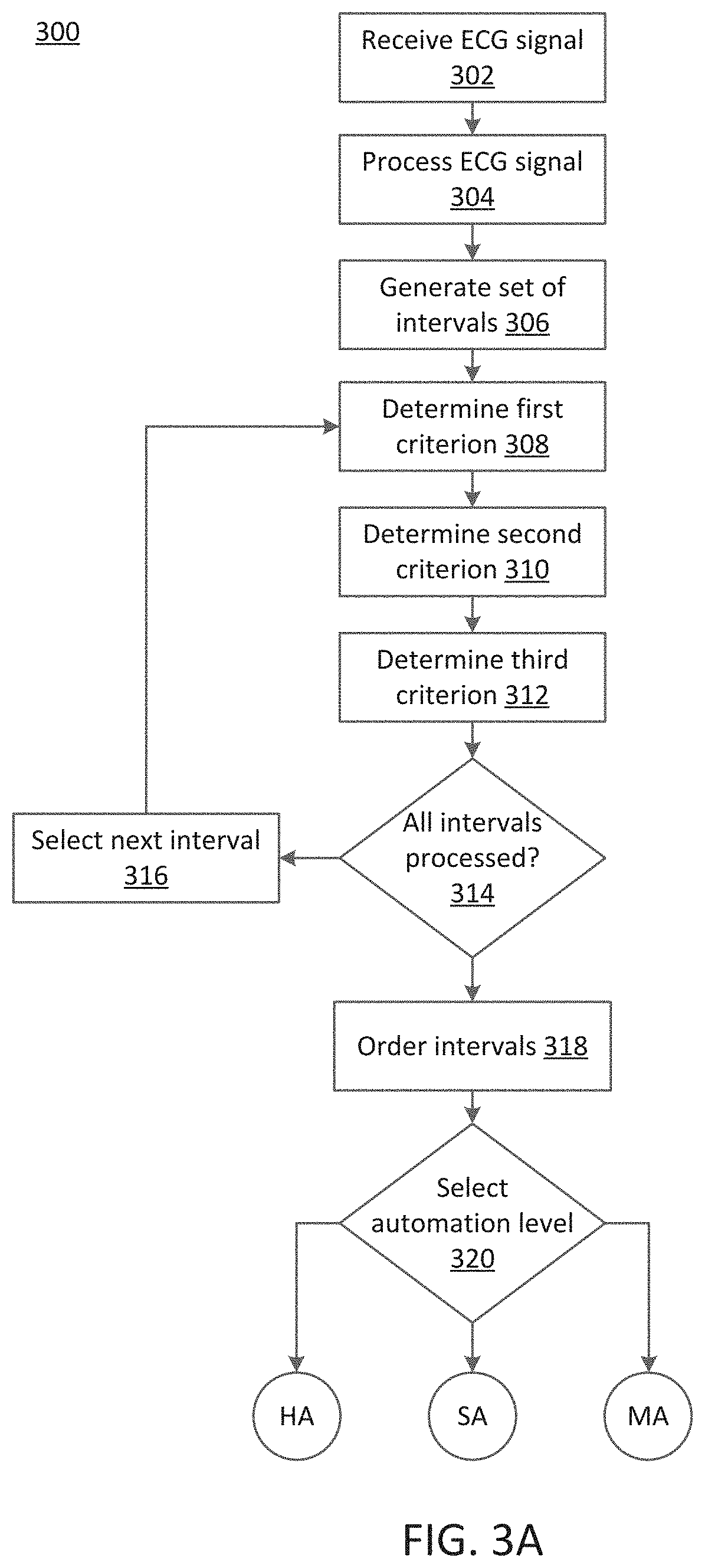Methods and systems for the delivery of accurate and precise measurements from the body-surface electrocardiogram
a body-surface electrocardiogram and accurate measurement technology, applied in the field of delivery of accurate and precise measurements of physiological signals, can solve the problems of poor signal quality, increased variability, and inability to accurately measure the heartbeat, and achieve high level of both accuracy and precision. , the effect of facilitating efficient review
- Summary
- Abstract
- Description
- Claims
- Application Information
AI Technical Summary
Benefits of technology
Problems solved by technology
Method used
Image
Examples
Embodiment Construction
[0027]Generally described here are devices, systems and methods for analyzing a physiological signal for monitoring at least one subject parameter. More particularly, described herein are devices, systems and methods for characterizing ECG signal quality. In some variations, the devices, systems, and methods described herein may identify a set of evaluable multi-beat sequences and determine interval measurements from the set of evaluable multi-beat sequences suitable for QT evaluation and analysis. The sequences may include the time durations of specific morphologies within a PAQRST complex, such as the PR, QT, and QRS intervals, or the time durations between two adjacent PQRST complexes, such as the RR interval. In another variation, the devices, systems, and methods described herein may provide a set of intervals that may be excluded from signal evaluation and analysis. The devices, systems and methods described herein may provide a set of sequences that may be used to determine a...
PUM
 Login to View More
Login to View More Abstract
Description
Claims
Application Information
 Login to View More
Login to View More - R&D
- Intellectual Property
- Life Sciences
- Materials
- Tech Scout
- Unparalleled Data Quality
- Higher Quality Content
- 60% Fewer Hallucinations
Browse by: Latest US Patents, China's latest patents, Technical Efficacy Thesaurus, Application Domain, Technology Topic, Popular Technical Reports.
© 2025 PatSnap. All rights reserved.Legal|Privacy policy|Modern Slavery Act Transparency Statement|Sitemap|About US| Contact US: help@patsnap.com



